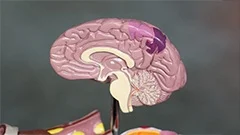Introduction
The immune system is a complex network of cells and tissues that protects the body against foreign invaders such as bacteria, viruses, and parasites. However, it must also maintain tolerance towards self-antigens and avoid attacking healthy cells. This delicate balance between immunity and tolerance is crucial for the proper functioning of the immune system. In this comprehensive course, we will delve into three key aspects: tolerance, autoimmunity, and transplantation.
Tolerance
Tolerance refers to the ability of the immune system to distinguish self from non-self, thereby sparing the host's own tissues while mounting an appropriate response against foreign antigens. This concept is essential for understanding the normal functioning of the immune system and its dysregulation in various diseases.
Central and Peripheral Tolerance
Central tolerance occurs within primary lymphoid organs, such as bone marrow and the bursa of Fabricius (in birds). Here, developing lymphocytes are screened for self-reactivity through clonal deletion or anergy. Peripheral tolerance takes place in secondary lymphoid tissues (lymph nodes, spleen, Peyer's patches) and non-lymphoid organs (e.g., skin, gut). Mechanisms of peripheral tolerance include anergy, ignorance, suppression, and deletion.
Regulation of Immune Responses
Regulatory T cells (Tregs) play a pivotal role in maintaining self-tolerance and preventing autoimmunity. They suppress the activation and effector functions of other immune cells through direct cell-to-cell contact or secretion of cytokines such as IL-10 and TGF-β. Additionally, B regulatory cells (Bregs) act to modulate humoral immunity by producing anti-inflammatory cytokines like IL-10.
Autoimmunity
Autoimmune diseases occur when the immune system mistakenly attacks the host's own tissues and organs. Genetic, environmental, and hormonal factors can contribute to the development of autoimmune disorders.
Common Autoimmune Diseases
Some common autoimmune diseases include rheumatoid arthritis (RA), systemic lupus erythematosus (SLE), multiple sclerosis (MS), and type 1 diabetes mellitus (T1D). Each of these conditions targets specific self-antigens, leading to distinct clinical manifestations and pathologies.
Autoimmune vs. Allergic Responses
Although both autoimmunity and allergies involve inappropriate immune responses against self or harmless antigens, respectively, there are important differences between the two. Allergic reactions typically involve IgE-mediated mast cell activation, whereas autoimmune disorders involve T cell-mediated damage to tissues. Furthermore, while allergies often develop rapidly, autoimmune diseases usually have a more gradual onset and chronic course.
Transplantation
Transplantation of organs or tissues from one individual (donor) to another (recipient) is an essential medical procedure for treating life-threatening conditions such as end-stage renal disease, heart failure, and liver cirrhosis. However, the success of transplantation depends on maintaining immune tolerance towards the grafted tissue.
Histocompatibility Complex (MHC)
The major histocompatibility complex (MHC) is a group of genes encoding cell surface proteins that present antigens to T cells. Differences in MHC molecules between donor and recipient can lead to rejection of the grafted tissue. HLA typing is used to match donors and recipients based on their MHC compatibility.
Immunosuppressive Therapies
To prevent rejection, immunosuppressive drugs are administered to suppress the immune response against the grafted tissue. Commonly used immunosuppressants include calcineurin inhibitors (e.g., cyclosporine), mTOR inhibitors (e.g., sirolimus), and corticosteroids. However, prolonged use of these drugs can lead to secondary complications such as infection, lymphoma, and kidney damage.
MCQ: Test your knowledge!
Do you think you know everything about this course? Don't fall into the traps, train with MCQs! eBiologie has hundreds of questions to help you master this subject.
These courses might interest you
Create a free account to receive courses, MCQs, and advice to succeed in your studies!
eBiologie offers several eBooks containing MCQ series (5 booklets available free for each subscriber).




